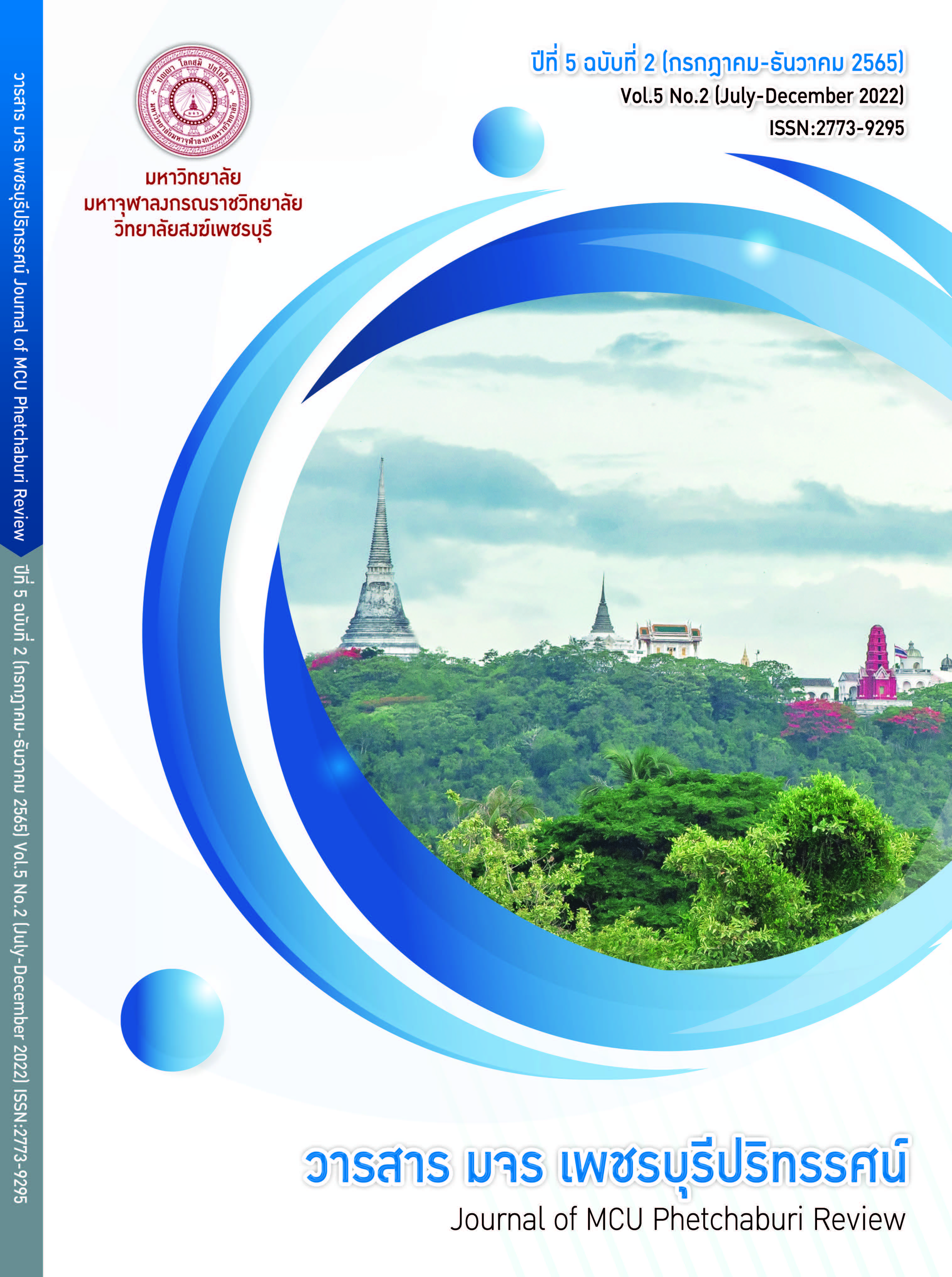MY INNER SELF IS THE BASIS OF ALL CHANGE : A CASE STUDY OF LIVED EXPERIENCE
Main Article Content
Abstract
Abstract
This paper presents a qualitative phenomenological case study of lived experiences resulting from one student’s research in consciousness while participating in the Bachelor of Arts degree program in The Science of Creative Intelligence for Management, Rajapark Institute, Thailand. This study seeks to understand meaning and to explore significance of results that were gained through utilizing the research in consciousness technologies of the Transcendental Meditation (TM) technique and its advanced programs, which form the practical aspect of the Science of Creative Intelligence, a complete science of consciousness. The results are centered on the theme: research into what is beyond change.
This student describes lived experiences of what she calls her deepest inner Self, leading to feelings of contentment, bliss, love, fulfillment, and happiness just from within. In order to explore meaning and identify significance, this study examines these results in the context of the theoretical principles of the Science of Creative Intelligence that describe changing and non-changing values of consciousness. Findings reveal the results clearly suggest the development of higher states of consciousness—particularly Transcendental Consciousness—which the consciousness literature explains is characterized by an inner experience of an unchanging field of pure consciousness, one’s inner Self. Triangulation builds deeper meaning by correlating the results with both principles of ancient Vedic science and modern quantum physics. Further, this triangulation shows that these qualitative results support published quantitative research that documents EEG changes showing a distinct shift from incoherent partial brain functioning to coherent total brain functioning during meditation practice leading to extensive benefits in daily life.
Keywords: consciousness, Transcendental Meditation, total brain functioning
Article Details

This work is licensed under a Creative Commons Attribution-NonCommercial-NoDerivatives 4.0 International License.
References
REFERENCES
Forem, J. (2012). Transcendental Meditation. Unites States of America, Hay House, Inc. (Original work published 1973.)
Greene, B. (2004). The fabric of the cosmos: space. time. and the texture of reality. New York: Alfred A. Knopf.
Hagelin, J. S. (1987). Is consciousness the unified field? A field theorist’s perspective. Modern Science and Vedic Science, Vol. 1, no. 1, pp. 29-87. Iowa: Maharishi International University Press.
Harung H.S., Travis F., Pensgaard, A.M., Boes, R., Cook-Greuter, S., & Daley, K., (2011). High levels of brain integration in world-class Norwegian athletes: Towards a brain measure of performance capacity in sports. Scandinavian Journal of Medicine & Science in Sports, Vol. 21, 1, 32-41.
Harung H.S., Travis F. (2012). Higher mind-brain development in successful leaders: testing a unified theory of performance. Cognitive Processing. 13, 171-181.
Katz, V., & Egnes, T. (2015). The Upanishads: A New translation by Vernon Katz and Thomas Egenes (Tarcher Cornerstone Editions) (Translation ed.) TarcherPerigee.
Maharishi Mahesh Yogi. (1969). Maharishi Mahesh Yogi on the Bhagavad-Gita: A translation and commentary, chapters 1-6. Harmondsworth, England: Penguin Books Ltd.
Maharishi Mahesh Yogi (1994). Maharishi Vedic University: Introduction. The Netherlands: Maharishi Vedic University Press.
Maharishi Mahesh Yogi. (1997). Celebrating perfection in education: Dawn of Total Knowledge. (2nd. Ed.). India: Age of Enlightenment Publications.
Maharishi Mahesh Yogi (2001). The Science of Being and Art of Living. New York, USA: Penguin Putnam. (Original work published 1963).
Maharishi Global Press Conferences (2003) retrieved from https://www.youtube.com/watch?v=6d__Dbum38s
Maharishi Global Press Conferences (2005, April 20) retrieved from https://www.youtube.com/watch?v=6d__Dbum38s
Merriam, S.B., & Tisdell, E.J. (2016). Qualitative phenomenology: A guide to design and implementation. 4th ed. Jossey-Bass, USA.
Orme-Johnson, D.W. & Farrow, J. (Eds.). (1977). Scientific research on Maharishi’s Transcendental Meditation and Transcendental Meditation-Sidhi Programme: Collected papers, 1, 705–712. Vlodrop, The Netherlands: Maharishi European Research University Press.
Travis, F.T., Haaga, D.H., Hagelin, J., Tanner, M., A., Nidich, S., Gaylord-King, C., Grosswald, S., Rainforth, M., & Schneider, R. (2010). A Self-referral default brain state: Patterns of coherence, power, and eLORETA sources during eyes-closed rest and the Transcendental Meditation practice. Cognitive Processes, 11(1), 21-30.
Travis, F.T., Harung, H., & Lagrosen, Y. (2011). Moral development, peak experiences and brain patterns in professional and amateur classical musicians: Support for a unified theory of performance, Consciousness and Cognition, 20, 1256–1264.
Travis, F. & Lagrosen, Y. (2014). Creativity and brain-functioning in product development engineers: A canonical correlation analysis. Creativity Research Journal. 26(2), 239–243.
Wallace, R.K. (1970). Physiological effects of Transcendental Meditation. Science; 167:1751–1754.


